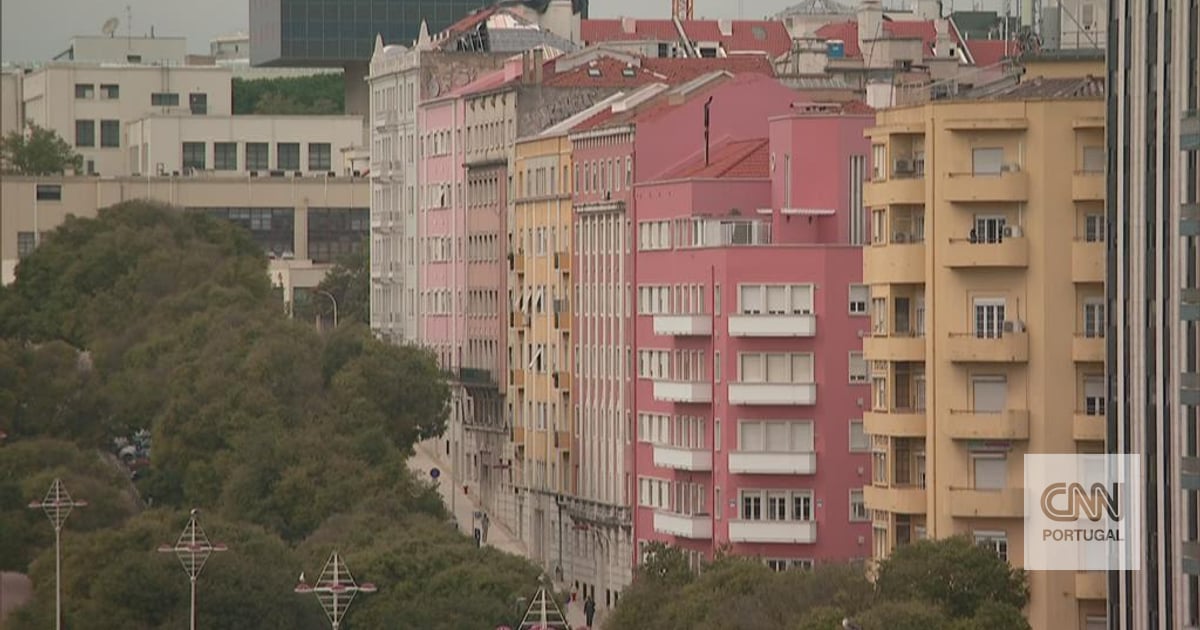Banks will have to create a 4% capital buffer based on the portfolio of individuals secured by housing to protect themselves from shocks in housing prices. The measure would penalize dividends.
Portugal’s largest banks will have to create additional capital to protect themselves from a possible shock to house prices, according to a new measure announced by the Bank of Portugal on Wednesday.
This concerns the creation of an additional capital reserve equivalent to 4% of the loan portfolio for individuals secured by real estate intended for housing, which will force banks affected by the measure to allocate about 400 million euros.
This measure comes at a time when banks are recording record profits due to rising interest rates and have the capacity to absorb the new cushion, and at a time when many countries in Europe are witnessing a free decline in residential real estate market prices.
The banks should arrive on October 1 of next year with this cushion in place. This procedure will be reviewed by the banking regulator at least every two years.
Not all of them are included in the macro-precautionary recommendations. BCP, BPI, Santander Totta and Novobanco will have to comply with the new rule, as they use their own estimated risk criteria for the purpose of calculating regulatory credit risk capital (the so-called internal rating-based approach), unlike Caixa – the public bank is exempt from this measure.
Another bank in Portugal may have to create this additional cushion: Bankinter. The Bank of Portugal is awaiting a decision from the Bank of Spain, regarding the reciprocity request it sent to the Spanish regulatory body, in order to impose the measure on the bank’s branch in Portugal.
You will measure the earnings condition
This action was taken after notifying the European Central Bank, “which did not object to the proposal,” and consulting with the National Council of Financial Supervisors, the European Systemic Risk Committee and the European Commission, according to the Bank of Portugal.
Banks were also consulted previously and were not satisfied with this measure, according to the OECD. The need to allocate more money to create these additional cushions will have implications for the dividends they intend to pay next year. With total profits of $2.3 billion in the first nine months of the year, BCP, Santander Totta and BPI have already announced that they will distribute the results to shareholders, while Novobanco is prohibited from doing so due to the conditional capital agreement.
In anticipation of this measure, the governor of the Bank of Portugal said last week that banks should seize the good moment to prepare for a change in the economic cycle. “It is very important for the banking sector to plan its precautions [almofadas]Build the necessary buffers, because the cycle can and will change, and we don’t know when it will change. But we have to be prepared, warned Mario Centeno in a meeting promoted by the American club Lisbon on Thursday.
Although the real estate market in Portugal still shows signs of resilience, the interest of the Bank of Portugal is aimed at strengthening the banks’ “bumpers” in the face of a possible future deterioration in economic conditions or an unexpected large correction in residential property prices. . Therefore, the cushion will absorb any losses.
“The application of this tool has a preventive nature and aims to increase the resilience of institutions in the face of the possible future incarnation of systemic risks in the residential real estate market in Portugal,” the supervisor notes in a statement.
“In a scenario where risks materialize, this reserve could be released to contribute to maintaining the provision of credit to the economy. In this sense, the Bank of Portugal will announce the period during which it does not expect an increase in this reserve.
The Development and Policy Bank says this measure will not harm credit
In Portugal, loans to families secured by real estate represent 26% of banks’ assets, and there is a high prevalence of variable interest rates in mortgage loans – about 90% of contracts are linked to variable interest rates.
This additional capital buffer complements the housing credit macroprudential recommendation announced in 2018 which imposes rules on the length of loan contracts (max. 40 years), the effort rate (just revised) and the loan term. -value.
The Portuguese supervisor believes that this new measure will not harm banks’ compliance with other requirements and guidelines and will not make it difficult to extend credit.
Other European countries, including Germany, Belgium, Slovenia, Lithuania and Malta, have also forced their banks to create these additional capital buffers based on their exposure to the real estate market. Just this week, Germany’s financial regulator, BaFin, warned of further losses that banks could face due to pressures on property prices.

“Wannabe internet buff. Future teen idol. Hardcore zombie guru. Gamer. Avid creator. Entrepreneur. Bacon ninja.”

